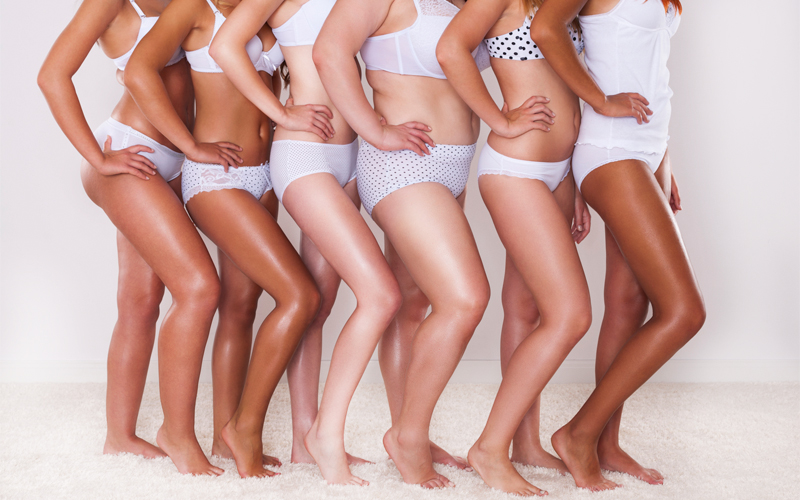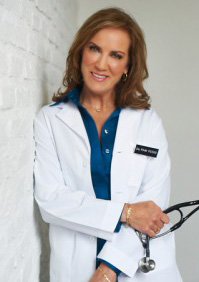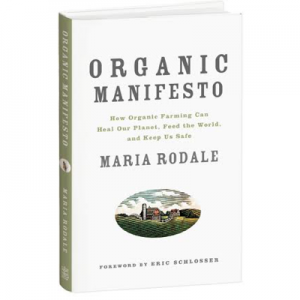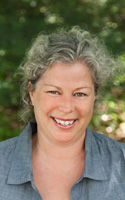
by guest blogger Pam Peeke, MD, MPH, FACP, best-selling author and expert on health, fitness, and nutrition
There’s been a lot of hoopla recently about the latest annual Sports Illustrated swimsuit issue. Mostly because the magazine’s public relations team proclaimed that for the first time a plus-size model, Robyn Lawley, would be included in the lineup of bikini-clad models. Further, another larger-than-average model, Ashley Graham, was featured in an ad for curvier clothes.
Instead of seeing the photos of Robyn and Ashley as history making, I found some cause for concern.
Robyn Lawley is 6’2″ and a size 12. She is stunning and beautiful, appearing fit and healthy. Yet she’s labeled plus-size, which can imply her status as an outlier, someone who doesn’t qualify to be a “real” model. This size-shaming message can stoke the fires of negative body image, especially in vulnerable young women.
Ashley Graham is a larger model. Age 27 and a size 16, she’s been very successful, not only capturing a top spot in the niche plus-size modeling market, but also appearing in her own Curvy Fit Club Workout series. She’s become her own multimedia sensation, speaking out about the need to reframe this entire discussion of what is normal and how one defines beauty.
What are we to do with this “plus-size” term? Queen Latifah once stated that plus-size is “a word that we need to bury.” Models Robyn Lawley and Tyra Banks have called the phrase offensive and outdated. There’s a movement to remove the phrase and simply refer to anyone in the modeling business as a model. I’m less concerned with Sports Illustrated‘s “plus-size” milestone and more concerned with how all of this is affecting the average woman trying to create her own sense of self, as well as maintain health and well-being.
To see what others thought about this, I took to my Facebook page asking for opinons. I read the replies with great interest and found that the responses fell into a couple of categories…
Ban the Phrase “Plus Size”
My thoughts when I heard this story…size 12 is a plus size? No wonder why so many people have body image issues!
Where did the plus-size term originate? Currently, a fashion model’s ideal stats are height: 5’9″ to 6′-plus; bust: 32″ to 36″; waist: 22″ to 26″; and hips: 33″ to 35″. These measurements usually translate to a size 0 to size 4 in couture clothes. Plus-size in model stats, then, are anything larger than these standards. Given the fact that the average American woman is 5’4″ tall, has a 34″ to 35″ waist, weighs between 140 and 150 pounds, and wears a size 12 to 14 dress, you can see that these model stats are miles from reality.
Fifty years ago, the average woman was 5’3″ to 5’4″ tall with a waist size of approximately 24″ to 25″; she weighed about 120 pounds and wore a size-8 dress. Curiously, over the past 20 years, fashion-model sizes have dropped from a size 8 to a 2 and even 0 (whenever I hear 0, I can’t help but envision an invisible woman).
My mother was a runway model and graced the covers of magazines, and was a favorite of photographers at the time. She never aspired to be one, but was discovered in college, and she used the money to power her way through law school.
She believed that women chosen to be models by the fashion industry are simply born looking different than the average woman. Trying to fit into this genetic mold is foolish and destructive. Women, she said, need to love themselves and their own unique genetic gifts.
Optimizing a Woman’s Health and Well-being Is the Goal
All of the Facebook commentators argued for a reframing and redefining of beauty, fitness, and health. From one:
The terminology is all wrong, I agree, but the concept that beauty comes in different sizes and shapes is a positive step forward. I don’t want our young girls today to feel inadequate if they aren’t a size zero. Skip the labels and show more beautiful, lovely curves!
At the end of the day, women are striving to achieve their top level of health, well-being, and mind-body fitness. The population as a whole is beginning to realize that beauty does indeed come in many sizes and shapes.
My argument is that to achieve optimal health, everyone needs to pay attention to his or her lifestyle habits and choices. It’s great to feel body pride, but make sure you have a foundation of healthy lifestyle. It’s an important responsibility to take care of yourself, mind, body, and spirit.
The goal is not to subscribe to a mythical model measurement. Instead, it’s to eat whole foods appropriately, get in regular activity, and practice stress management skills. It’s about staying engaged in your life and doing things that give you joy and for which you have passion.
There is no Holy Grail of happiness achieved in a size-0 pair of jeans.
The Bottom Line
Ditch the term “plus-size.” It serves no purpose but to brand, shame, and destroy a woman’s body image and sense of self. Promote the regular, daily practice of healthy lifestyle habits to achieve the goal of health and wellness.
As you progress on your journey, don’t look into the mirror on the wall for your self-worth and esteem. Instead, revel in the energy you feel as you reach the top of the hill on your daily walk. And enjoy the pride of slipping into and embracing your own unique genes (or was that jeans?).
 Pamela Peeke, MD, MPH, FACP, is a Pew Scholar in nutrition and metabolism, assistant professor of medicine at the University of Maryland, and a fellow of the American College of Physicians. A triathlete and mountaineer, she is known as “the doc who walks the talk,” living what she’s learned as an expert in health, fitness, and nutrition. Her current research at the University of Maryland centers on the connection between meditation and overeating. She is the author of many best-selling books, including Fight Fat after Forty. Her newest book is the New York Times bestseller The Hunger Fix.
Pamela Peeke, MD, MPH, FACP, is a Pew Scholar in nutrition and metabolism, assistant professor of medicine at the University of Maryland, and a fellow of the American College of Physicians. A triathlete and mountaineer, she is known as “the doc who walks the talk,” living what she’s learned as an expert in health, fitness, and nutrition. Her current research at the University of Maryland centers on the connection between meditation and overeating. She is the author of many best-selling books, including Fight Fat after Forty. Her newest book is the New York Times bestseller The Hunger Fix.




Since most everything in advertizing is fueled by $$ profits, I just wonder who or what companies make the most $$ from the use of the term “plus-size”??? If we could boycott those companies maybe they would change their offensive words. Getting a group of people willing to not buy from these companies, slowing their profits makes a statement that often produces good results.